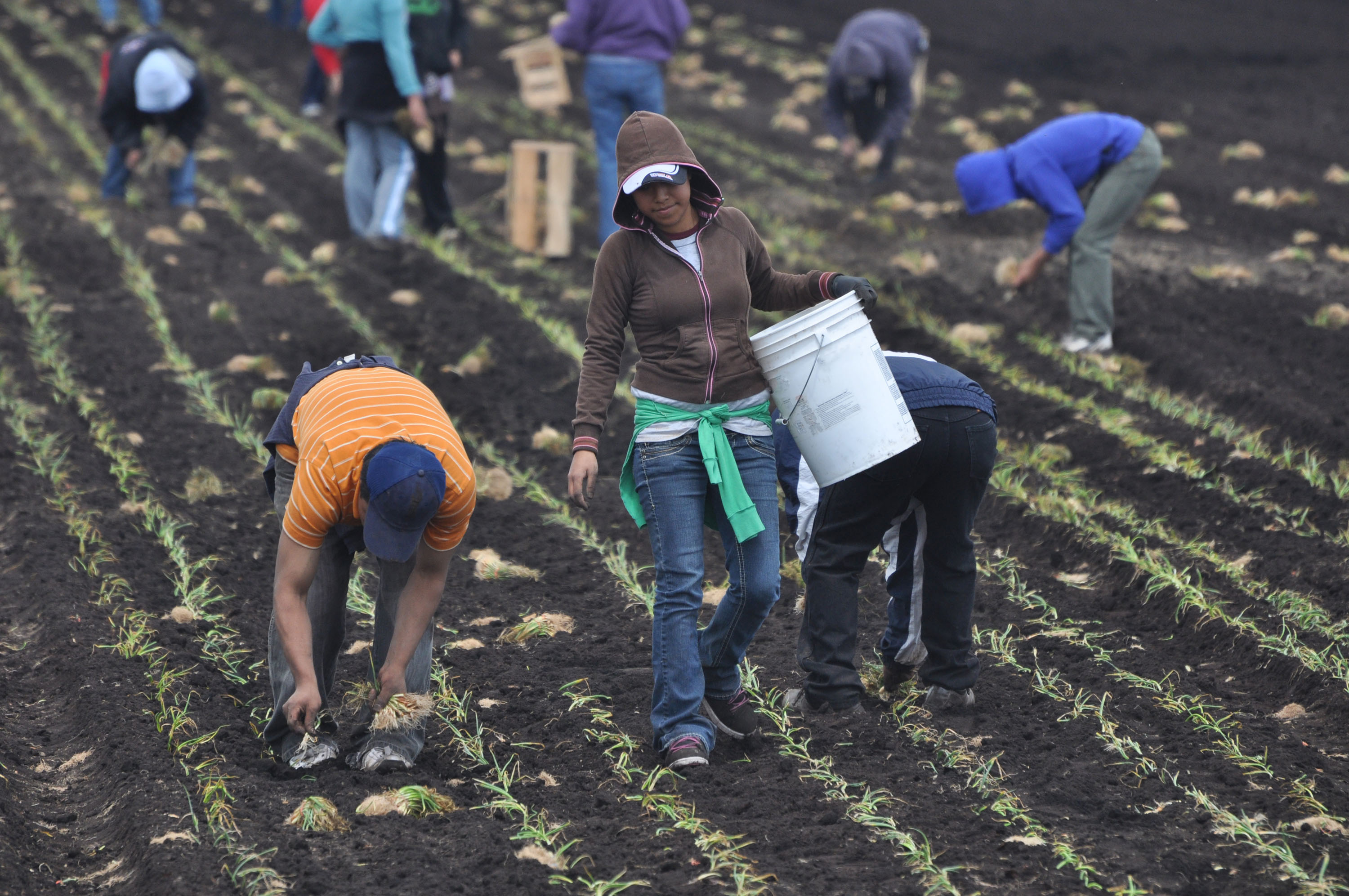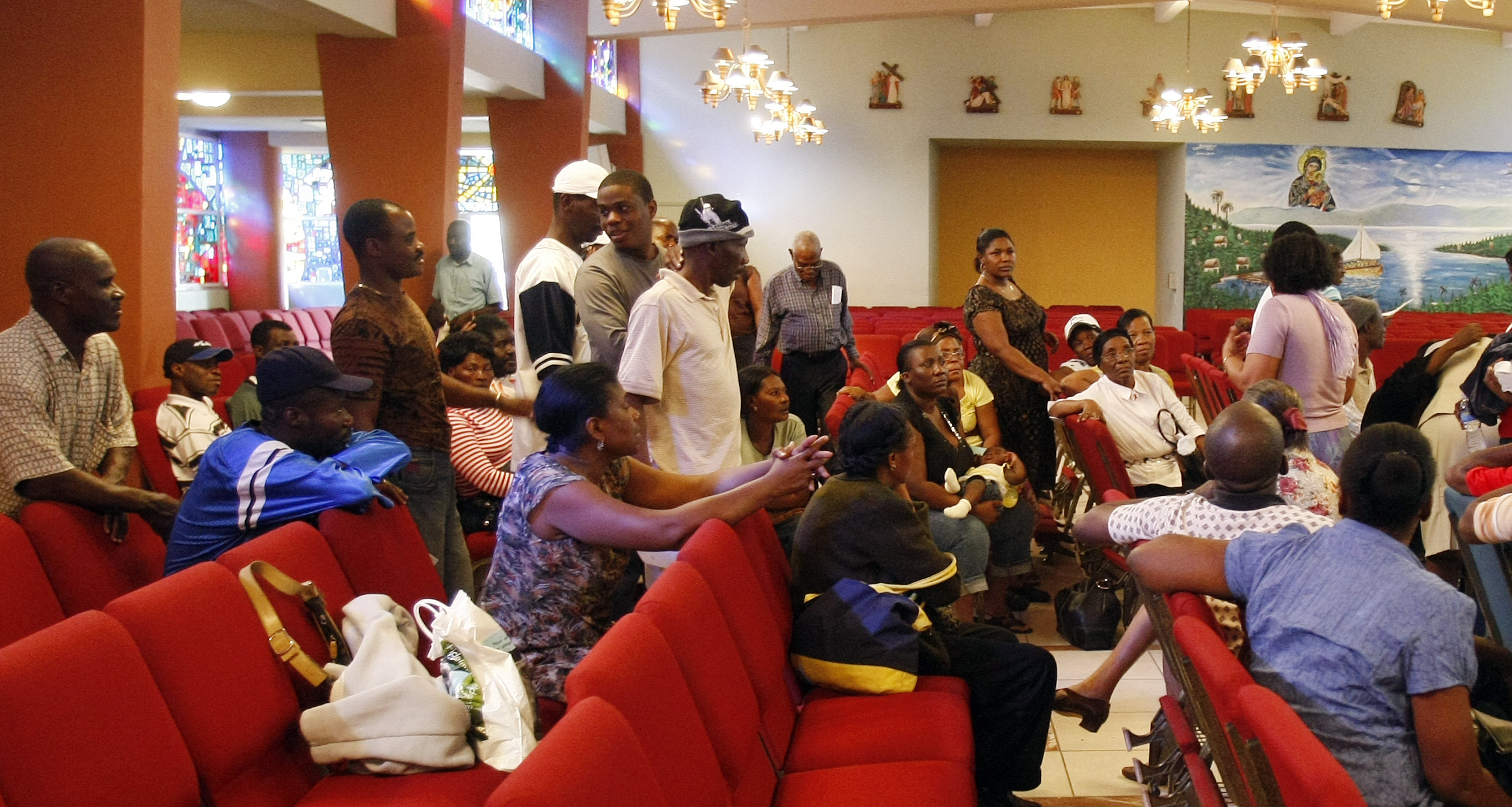New York’s small farms are beginning to feel the strain of immigration enforcement under the Trump administration, with experts warning that an industry heavily reliant on undocumented workers needs an urgent solution from Congress.
While much of the focus when it comes to immigrants in the Empire State has been the New York City metro area, the state itself is home to as many as 67,000 farmworkers across 30,000 farms mostly upstate and on Long Island.
“We are the most important part of the country, because no one can live without food,” said one Mexican man who has worked in New York for 12 years, speaking to Newsweek on condition of anonymity. “So we can live without a car, without electricity, without many things. But we can’t live without food.”
A Multi-Billion Dollar Industry At Risk
The human impact of ongoing ICE raids is evident to those working on the ground. Another farm worker in New York, who spoke on the condition of anonymity for fear of reprisals, told Newsweek that “cows are going to die” if the administration’s deportations continue across the state.
“It’s a risk every day to go to work. It’s a risk to go to the grocery store. It’s a risk to drive your kids to school. It’s a risk to drive your child to their doctor’s appointment,” the worker told Newsweek.
The person said that the farming industry in New York won’t be able to function without immigrant workers.
“It doesn’t make sense on either a human level or on a business level. The food industry relies mostly on undocumented people,” the worker said.
New York is the country’s top producer of yogurt, and number two producer of apples, but U.S. Immigration and Customs Enforcement (ICE) raids are potentially putting an $8 billion farming industry at-risk, experts believe.
Margaret Gray, an associate professor of political science at Adelphi University, told Newsweek that New York state has a diversity of farming sectors and immigrant workers supporting them.
“Dairy workers are year-round workers, apple pickers might only be in the state for eight or 12 weeks,” Gray said. “So, a lot of the apple pickers are on H-2A guest worker visas and so they’re not going to be targeted by ICE, but the dairy industry is not eligible for these visas at this time because to be eligible, you cannot have year-round work.”
Year-round operations, such as dairy farms, are largely ineligible for H-2A visas. Dairy farming requires consistent labor throughout the year to care for animals and maintain production, and the H-2A program is designed only for temporary or seasonal work during workforce shortages.
As a result, many dairy farms and other year-round agricultural businesses continue to rely heavily on undocumented workers to keep their operations running.
Gray said that communities like those in Suffolk County, on Long Island, where large immigrant communities have formed around the farming and agricultural industries, are among those most at risk when many residents and workers do not hold legal status.
“Even the detention of one worker right now can cause chaos. I have talked to people who are literally afraid to leave the house,” Gray said. “They’re afraid to go grocery shopping, they won’t go to parent-teacher meetings, and some of them aren’t even sending their children to school out of fear.”
A declining workforce, especially in sectors such as agriculture, could trigger supply shortages and higher labor costs, which may ultimately increase consumer prices.
Undocumented New Yorkers made a substantial economic contribution, paying $3.1 billion in state and local taxes, according to the Institute on Taxation and Economic Policy. The Migration Policy Institute estimates that approximately 11.3 million undocumented immigrants live in New York.
“As business owners and employers in agriculture, we are very dependent on migrant workers,” Dennis Rak, who owns Double A Vineyards in West New York, told Newsweek. “These are jobs that we’d offer to any person, they are not bad-paying jobs, they’re $20 an hour or more, but no one wants to do any sort of manual labor anymore. So it’s critical for agriculture to have access to a source of labor that will do this.”
Will Trump Find a Solution?
Armando Elenes, Secretary-Treasurer for the United Farm Workers of America, told Newsweek that UFW has seen higher engagement from farm workers who want to know their rights should ICE show up.
In May, 14 workers at Lynn-Ette & Sons Farms, in Orleans County, were detained during an ICE raid. Then, in mid-August, agents showed up again to arrest seven more.
“The workers that have not been detained, it’s the fear of them being next or them being targeted, and the workers who were detained, they have their roots here,” Elenes said. “They’ve been here for years, and they have families here, they have friends here, and to be uprooted and basically sent back, whether it be to Guatemala or to Mexico, it’s a traumatic experience.”
President Donald Trump said in July at the Iowa State Fairgrounds that his administration was working on legislation to allow undocumented workers in sectors such as agriculture and hospitality to remain in the country, a compromise that many in MAGA said amounted to “amnesty.”
“We’re working on legislation right now where – farmers, look, they know better. They work with them for years. You had cases where…people have worked for a farm, on a farm for 14, 15 years and they get thrown out pretty viciously and we can’t do it. We gotta work with the farmers, and people that have hotels and leisure properties too,” Trump said, although no official program or policy update has been announced.
The administration has urged those in the U.S. without legal status to self-deport, offering them $1,000 to do so, or face tougher penalties, such as ICE detention. For the Mexican worker Newsweek spoke to, leaving is not an option.
“I think that the people who are taking self-deportation are people who have just arrived and since they haven’t had a permanent job, they don’t have a life, like they don’t have stability anymore,” he said. “So that’s not an option, I think, for most of the people who are here, because, I mean, $1,000 you earn in a week.”
Newsweek asked the USDA what the administration was doing about the issue, with a spokesperson repeating that Trump was “putting America First”, including streamlining H-2A and H-2B visas.
“Our immigration system has been broken for decades, and we finally have a President who is enforcing the law and prioritizing fixing programs farmers and ranchers rely on to produce the safest and most productive food supply in the world,” the spokesperson said.
Rak said he had little faith that the Trump administration was making any serious efforts on immigration reform which would help business owners like him.
“It doesn’t matter who is in the White House, or who’s in charge of Congress, none of them has been able to work together to come up with a solution that would solve this problem,” Rak said. “If the problem was solved with a workable immigration policy, we wouldn’t need to have the enforcement things that are going on now.”

https://www.newsweek.com/new-york-farms-immigrant-workers-ice-raids-2124775






